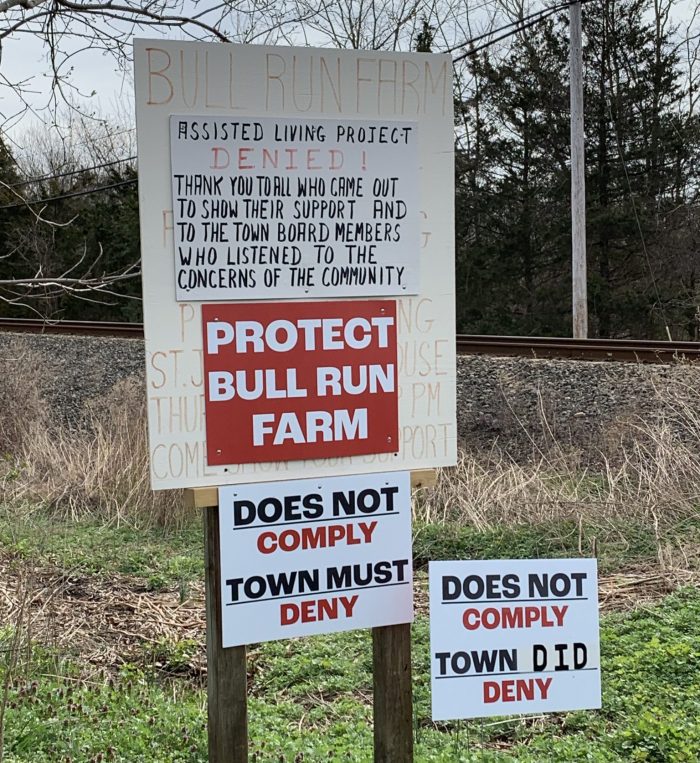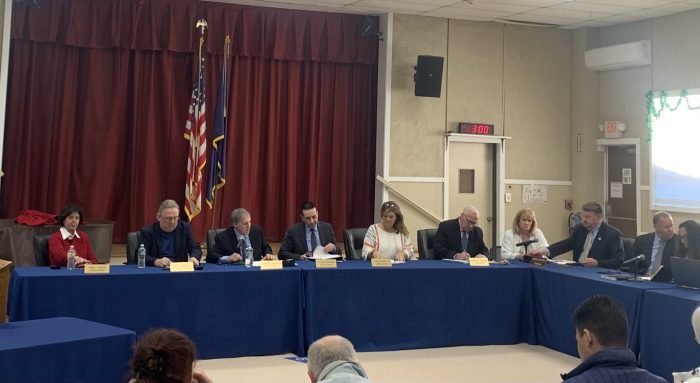By Sabrina Artusa
Walking past the dead, dried grass littered with sharp stumps and intercepted by a slight meandering stream of water, longtime visitors of the beloved Blydenburgh County Park in Smithtown can hardly believe the hundreds of acres of mud and dead vegetation, yellowing in the sun, was once an 8-foot deep lake.
The lake, also known as Stump Pond or Weld’s Pond, was fed by the headwaters of Nissequogue river and maintained by a dam, which breached after the Aug. 18-19 storm produced over 9 inches of rain.
The section of land between the dam, which was approximately 50 feet wide, and the lake was completely washed away, leaving a large chasm.
As one of the least developed ponds on Long Island, it was enjoyed by kayakers, anglers, hikers, dog walkers, Boy and Girl Scout troops and horseback riders. Throughout its two centuries of existence, the pond has boasted large amounts of bass.
Fishing and boating are impossible now, and parts of the trail are closed. Two brothers, Tom and Frank, paid a visit to the lake that was the setting for many cherished memories.
“I caught my first fish here,” Tom said. The pair came to assess the damage and to see if there could be any fishing. Frank had been fishing at the pond since 1966. The only evidence of fish now was a small colony trapped in a shallow section of residual water.
“We don’t usually see devastation like this,” Frank said. Indeed, the pond was constructed in 1798 to service the Grist Mill and in the 200 years since, the dam has been breached only once before. But it was not a spillway breach and therefore not as extreme.
An employee of the Long Island Greenbelt Trail Conference said plans are in the works to restore the dam and refill the pond. The type of spillway that will be used in the new dam has yet to be determined.
The employee, who prefers to be anonymous, said that he is optimistic for the future of the pond. He cautioned against venturing too far along the trail. The thick mud is dangerously and decievingly deep. Suffolk County Executive Ed Romaine (R), who has lamented the destruction of several valued natural and historical sites, has spoken of his plans to get the area restored. The employee said that Romaine’s appreciation for the history of the area makes him hopeful that action will be taken swiftly and effectively.
“What we have seen in the last day is an ecological, environmental and economic disaster for parts of northern Suffolk County,” Romaine said at a press conference held at the pond.
“We have to take a look at our infrastructure, catalog it, not only to repair the damage that was done, but to plan ahead so we don’t have a worse disaster in the next storm,” Romaine said. He added that, in collaboration with others, he intends to analyze dams across the county.
On Sunday, President Joe Biden (D) issued a federal emergency declaration for Suffolk County. This is a crucial step in securing federal aid for relief and restoration and is in response to the over-2,000 reports of damage across the county.
A similar dam-breaching tragedy occurred at Stony Brook Mill Pond.
According to a representative for Gov. Kathy Hochul (D), the Department of Homeland Security is working with the county on a plan for relieving homeowners whose properties suffered damage.
At Blydenburgh Park, there was no damage to the Miller’s House, constructed between 1801 and 1803 and overlooking the pond; the Grist Mill, only around 50 yards from the destroyed dam; or Blydenburgh-Weld House.
While this history was preserved at Blydenburgh, it was a small victory among larger devastation. In the Smithtown Library, a special collection dating back centuries was damaged by water when the storm caused flooding to the building’s first floor, bypassing the library’s protective measures. The building is now coping with damage to the floor as well to the archive.
New York State Sen. Mario Mattera (R-St. James) called the storm “devastating” and expressed his desire for FEMA funds.
Assemblyman Mike Fitzpatrick (R-Smithtown) said, “I used to fish here as a kid. I used to ride my bike. It is one of the most beautiful spots in New York state. … We are going to rebuild this. We are going to restore this park to the glory we expect.”

















 Herb Mones, Friends of the Greenway editor-in-chief and president of the Three Village Community Trust, wrote in an email that while there hasn’t been an official sale to either the MTA or to a solar farm firm, it is likely that these sales will happen and that a portion of the Greenway trail will have to be rerouted to accommodate a new rail yard.
Herb Mones, Friends of the Greenway editor-in-chief and president of the Three Village Community Trust, wrote in an email that while there hasn’t been an official sale to either the MTA or to a solar farm firm, it is likely that these sales will happen and that a portion of the Greenway trail will have to be rerouted to accommodate a new rail yard.



